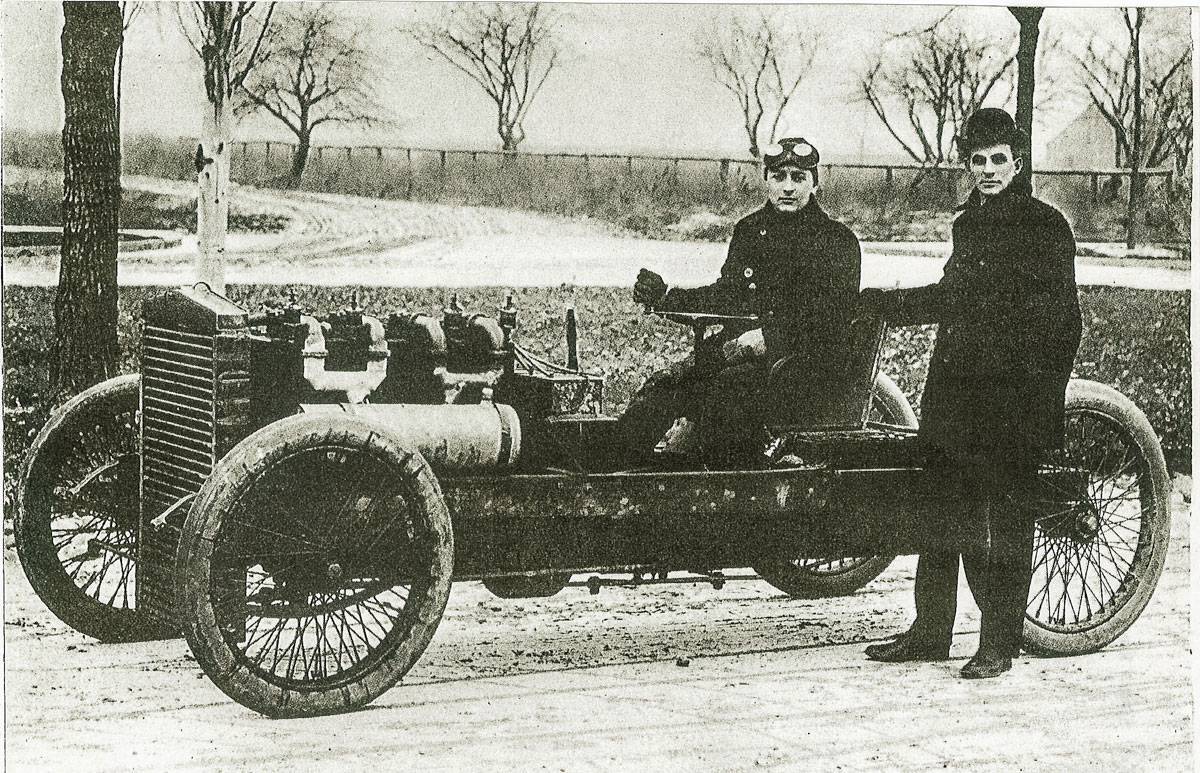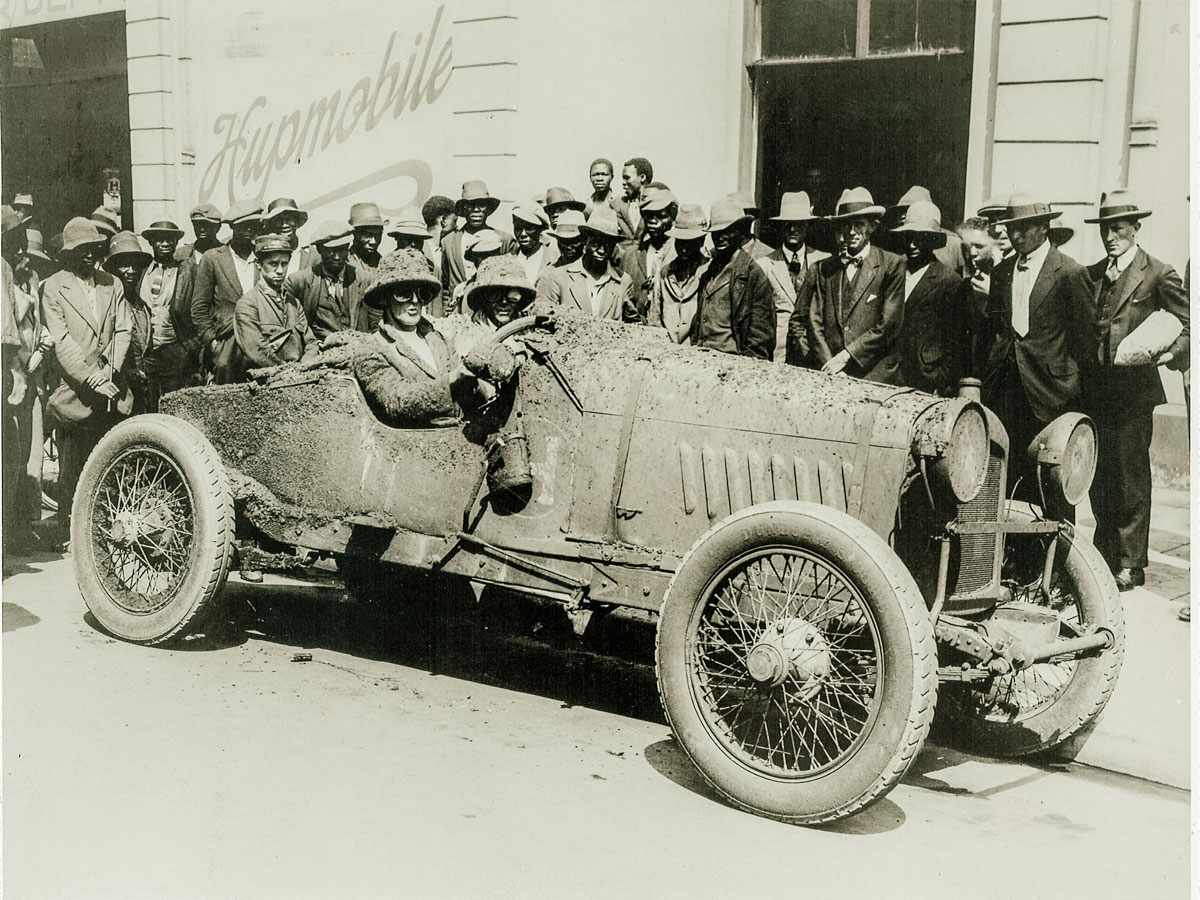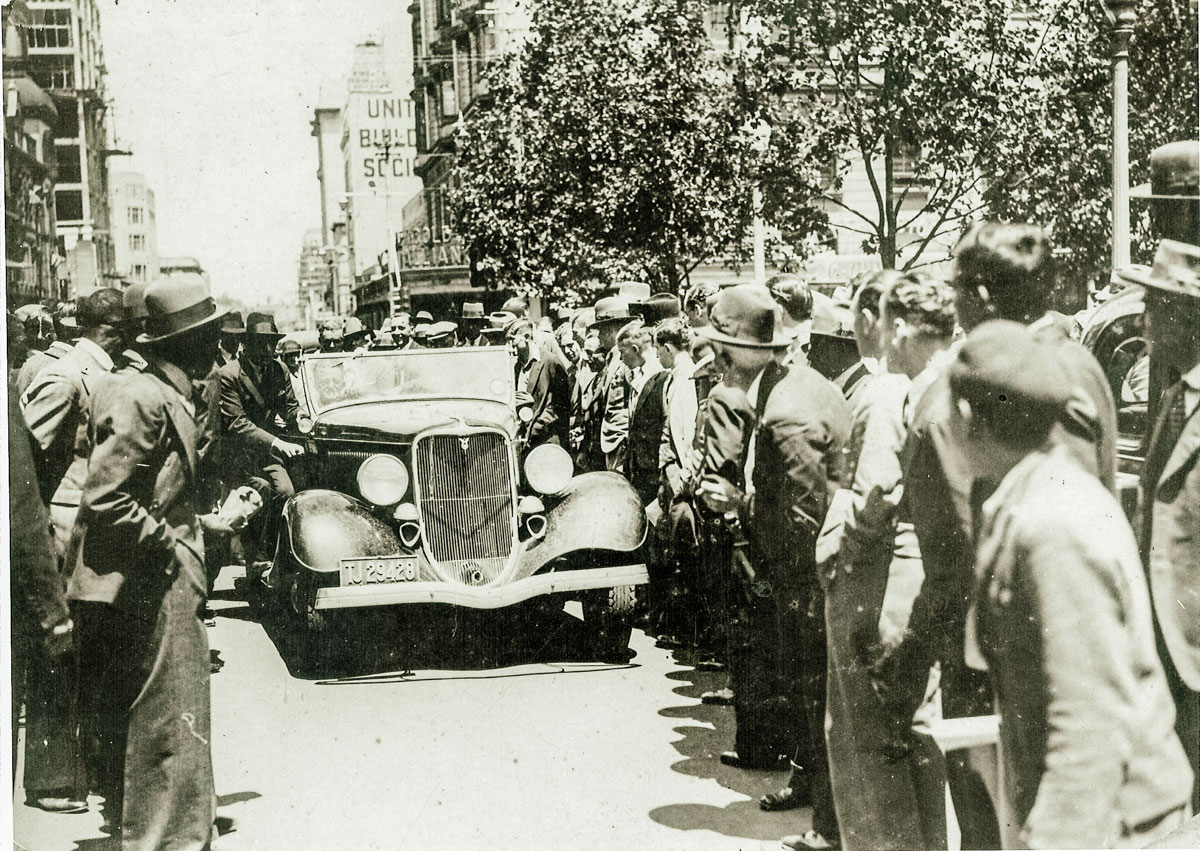
27 Mar Rear-view mirror: some early record breakers
Wendy Monk picks out some interesting historic items from FMM’s photo archives, some with a story, others with info required… This month, some early record breakers is the theme…
Let’s start with the first picture. Henry Ford left the Henry Ford Company in 1902 after a dispute with his stockholders, principally Henry Leland (who then renamed it the Cadillac Motor Company). Part of Henry’s ‘severance package’ was the design for a racing car, for which he had pooled resources with bicycle racer Tom Cooper and aspirant record breaker Barney Oldfield. A pair of cars were built based on that design, which was essentially a bare chassis with a massive 18,9-litre four-cylinder engine, no rear suspension, no differential and steered by a crude metal bar, aka tiller. One car was painted red and named 999 after the world record-breaking 4-4-0 steam locomotive Empire State Express No.999. The second car was painted yellow and named Arrow, symbolising ‘a sleek arrow flying through the air’.
Henry soon sold his stake to Barney Oldfield but, ever resourceful, he reserved the rights to promotion and publicity. Oldfield drove 999 to a maiden win in October 1902 in an 8 km race known as The Manufacturer’s Challenge Cup, and successfully raced it for a year before it was wrecked in a crash. Once Arrow was completed, it also notched up numerous victories, but in September 1903 it crashed and driver Frank Day was killed. Undeterred, Henry bought the wreckage and embarked on a rebuild for an attempt on the land speed record. He renamed it 999, and with mechanic Ed Huff at the throttle, he managed to set a new record in January 1904. But his achievement lasted only 14 days, by which time Henry had garnered much welcome publicity for his new company, The Ford Motor Company, established in June 1903. Nothing ventured…
A century ago, record breaking in South Africa was quite common and in 1924, Hupmobile agent H P Rose ventured out to set a new record for the Cape Town to Johannesburg run – racing against the Union Express locomotive. For the attempt, Rose stripped a 1923 Hupmobile Model R with 20 000 miles on the odo. Along with the train, he left Cape Town at 04h00 on October 9 and the 973-mile journey (1 566 km) to Johannesburg took 38 hours 28 minutes – a new record. Incidentally, the Union Express beat the Hupmobile by 2½ hours. For a fuller account of this adventure, refer Derek Stuart-Findlay’s book Our Intrepid Cape Motoring Pioneers.
The final picture is of Sylvester McKenzie arriving through a welcoming parade at the Johannesburg City Hall in 1934 in his Ford V8. There is no other information attached to the photo but the educated guess is that it was to celebrate his setting a new Durban to Johannesburg Heavy Car record. Can any reader shed some more light on this event, perhaps?





